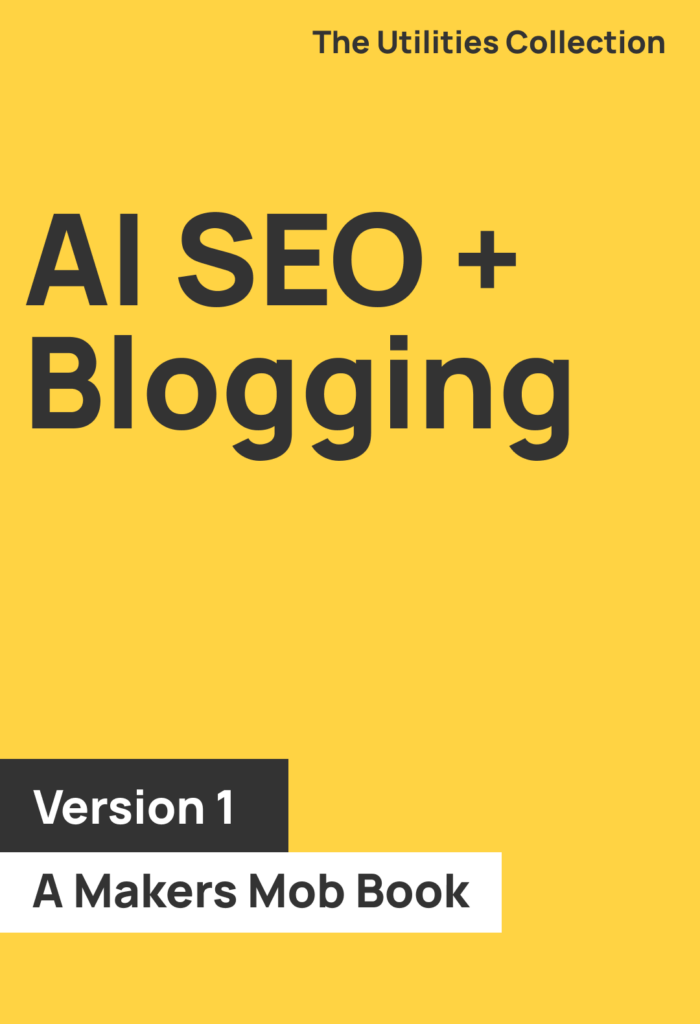Types of blog posts. Fascinating topic.
Okay, not really, but I’m going to do my best to make it interesting, OK?
First of all, I want to tell you that I’m going to give you four types of posts that you need to succeed with blogging.
That’s it.
Not 7. Not 9. Not 73.
We’ll talk about some of the others that you might have heard about and why I think they really just fit into one of these 4 types.
4 Types of Blog Posts You Should Be Writing
Here’s the deal.
The only person “types of blog posts” is important to is the person writing a blog post.
The person reading the blog post doesn’t care what type it is. They only care about whether or not it is enjoyable to read and that it is helping them in some way.
What that means for you is that no matter which of these four types of blog posts you choose to write today, it better achieve both of those things:
- Enjoyable to read
- Improves their life in some way
Let’s take a look at each one and how you can do that.

#1: The List Post
A list post is a collection of examples of types of things. This post is a list post (4 Types of Blog Posts).
It can be a list of tips, tricks, ideas, quotes, projects, recipes…
The options are endless depending on your niche.
It’s very easy to write a list post with an enticing title, (21 Stunning DIY Dollar Store Farmhouse Hacks!), start sharing it to whatever platform your Hero is hanging out at, and wait for the page views to come in.
You’ve got someone to notice you (that’s part of the Pocket Business Framework). Congratulations!
But what’s going to make them pay attention to you? (That’s the second part).
There are, I don’t know thousands? (millions?), of examples of really bad list posts out there.
They are basically just a series of images or short bits of text and what happens is the reader just quickly scans or scrolls through and then heads back to wherever they came from (usually Pinterest, maybe Google search engine results).
There’s no connection that’s been made between you the writer and your reader.
You’ve got to do something to capture the attention of your reader with your list post.
First of all, make it easy for them to consume what is on the page. Don’t clutter everything up with pop-ups, a million ads, and social share buttons.
Just that alone is going to help you stand out from the rest of the not-so-great list posts out there.
Then you have to find some way to add value and a little bit of yourself to the post.

If you are sharing projects that you’ve found on Pinterest, write a few sentences about it and how you might display it or a tip on what type of materials to use.
Something that gives value to your reader. Something to get their attention.
The introduction to your list is going to be really important. When someone clicks to go see “21 blah blah blahs” they are probably not expecting to go read. They are expecting to scan.
Try to make them stop and pay attention with the introduction.
You can be a little more subtle and start your list post with a short but captivating story that is relevant to the post.
Stories draw people in and get them engaged with their reading. They start to envision themselves in the story and they become invested.
Plus they learn a little bit about you and that’s a good thing.
Lists posts can be a fantastic and valuable way of presenting information to your reader if you can get their attention and remember to add value to them.

#2: How to Posts/Tutorials
If it’s value that we need to provide to our readers, then a how-to or tutorial post is easily the best way to do that.
Pick a topic that you know your reader is struggling with (an example would be this post on writing better blog post titles) and lay out the clear and simple instructions they need to get better at that thing.
It doesn’t have to be a monumental, life-changing thing. It can be one tiny thing that you know will improve your reader’s life in some way.
Or it can be an Ultimate Guide that walks them through a larger transformation.
Because that’s what this is all about.
Helping your reader improve their life in some way.
A how-to post or a tutorial is a great way to do that.
Let’s do a gardening example.
If you can show someone a simple process for growing basil on their windowsill in a blog post then you have built a little bit of trust with them.
That trust might lead them to sign up for your opt-in where you’ve promised to show them some other awesome thing about indoor gardening (sorry my indoor gardening ideas stop at windowsill basil).
When they get through that amazing resource that you gave them via email you build even more trust.
Then you send them emails that show them you understand their problems and can help them improve in some other way.
By the time they get to the course you are offering on gardening, you’ve taken care of the 3rd and most difficult part of the Pocket Business Framework.
Get them to trust you.
And it all started with a really well-done how-to post.
I will add one important reminder for you when you are writing how-to’s or tutorials.
Don’t forget that they still need to be interesting/entertaining in some way!
You want everything you write to allow your reader to see you as their guide in this journey they are on to improve themselves.
That is much easier to do when you are relatable and interesting to the reader. You don’t have to be a comedian or a superhero. You just need to seem like a real-life person that they can relate to.

#3: Product Review Post
It’s a very good idea to include product reviews in your arsenal of types of blog posts for two reasons.
- They are very useful to your reader.
- They can mean affiliate sales for you.
First, if there are tools, products, or services that are going to help your reader improve in some way, then you are kind of obligated to share those with them.
I’m learning about how to take smart notes right now and there are tools that make that a lot easier. I am very happy to take a recommendation for one of those tools from someone I trust.
And of course a review post of a product that you really love can be a great way to earn affiliate sales.
Just like selling any other product, you need to earn some trust with your reader before they will make that affiliate purchase.
They need to know why they should trust your opinion over the thousands of other reviews they could go read.
That means you need to be 100% honest with them and give them the pros and the cons so that they can make a well-informed decision.
The last thing you want is to convince someone to purchase a product and it’s terrible and then they will forever associate you with that terrible product.
Every product has flaws, so just make sure you are upfront about them in your review.

#4. Case Study
A case study is a great way to show your reader a long view of a particular project.
We wrote a case study of our blog, Bogoten over the course of a year. We published one version after 6 months and 6 months later we updated it.
It’s a massive post with tons of information. What’s great about it is it shows many of the things we talk about in theory, implemented in real life.
It’s an amazing benefit to the reader.
When the reader can begin to see the ideas they are reading about played out in an actual example, it helps cement things in their minds.
Now, a case study doesn’t have to take a year or even six months.
You could do a case study of different types of gluten-free flour and which works best in what recipes.
Or you could do a case study of a person’s results on your weight loss program after 6 weeks.
There are a million different ways to do this, but the value here is that the reader can see real-life results.
That is most definitely going to help with that all-important “Get them to trust you” piece of the Pocket Business Framework.
Is that Really All the Types of Blog Posts?
I mean, technically, yes.
There are lots of ways you can impart information in a blog post, but those four can pretty much encompass everything.
You can do a post that’s an interview with someone. And I suppose that becomes an interview post, but what is the point of the interview?
If you’re talking to the interviewee about a process that they follow, then isn’t it sort of a how-to post?
Or if you are talking to the interviewee about a product or service they offer, isn’t it then a review post?
You’ll see Infographics mentioned as a type of blog post. But is that not a list?
And if you think an infographic is a whole blog post, I would ask you how much value your reader really gets out of just an infographic. And is there any kind of trust being built between you and the reader with one?
There are also personal posts that you can write. An opinion-based post or just a rant.
Sometimes those go over really well. And they can build a rapport with your reader.
But you do have to be sure when you are doing that type of post that you are still bringing some type of value. Otherwise, you’re just giving a peek inside your diary.
That’s kind of fun, but eventually, your readers will begin to ask “What’s in this for me”?
And they should be asking that. That’s your job. To make sure there is in fact, something in it for them.

